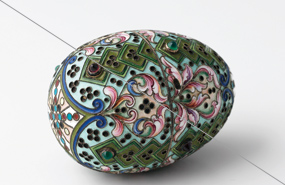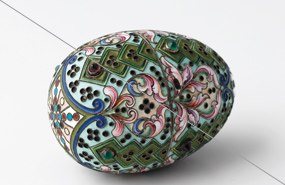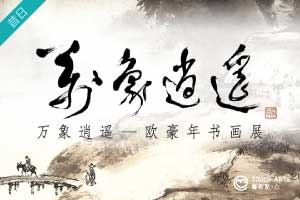Memory of Azov
艺术导赏
Art Tour Guide
 Peter Carl Faberge is renowned in his creativity and exquisite craftsmanship. Among all the outstanding artworks that he produced for the imperial royal family, the most stunning ones have to be the Faberge Easter eggs. They exhibit a high degree of realism, made to the finest details, and have a mechanical part that brings surprise we all applaud even in today’s modern world. The curator from Kremlin Museum, Mrs Muntyan, tell us the interesting stories behind these eggs.
Peter Carl Faberge is renowned in his creativity and exquisite craftsmanship. Among all the outstanding artworks that he produced for the imperial royal family, the most stunning ones have to be the Faberge Easter eggs. They exhibit a high degree of realism, made to the finest details, and have a mechanical part that brings surprise we all applaud even in today’s modern world. The curator from Kremlin Museum, Mrs Muntyan, tell us the interesting stories behind these eggs.
Memory of Azov

 This is the earliest egg from the Kremlin Museum collection. It was commissioned by Tsar Alexander III as a gift to his wife Empress Maria Feodorovna, who was a Danish princess before married to the Russian Tsar. This egg was made in 1891 and it commemorated a historical journey to the East by the heir to the throne, Prince Nicholas who was to become later Tsar Nicholas II, Russia’s last Tzar. During this journey, the future Tsar visited India, Siam (now Thailand), Saigon (now Vietnam), Singapore and Hong Kong. From Hong Kong, he went up the Zhujiang River to visit Mainland China as well.
This is the earliest egg from the Kremlin Museum collection. It was commissioned by Tsar Alexander III as a gift to his wife Empress Maria Feodorovna, who was a Danish princess before married to the Russian Tsar. This egg was made in 1891 and it commemorated a historical journey to the East by the heir to the throne, Prince Nicholas who was to become later Tsar Nicholas II, Russia’s last Tzar. During this journey, the future Tsar visited India, Siam (now Thailand), Saigon (now Vietnam), Singapore and Hong Kong. From Hong Kong, he went up the Zhujiang River to visit Mainland China as well.
Unfortunately for this journey, there’s a rather tragic end to it. The trip lasted nine and a half months, and then when Nicholas was in Japan, he was attacked but survived. So he had to cut short his trip and ended up in Vladivostok in the Russian Far East where he laid the symbolic stone that marked the construction of a railway that linked both the European Front and the Asian Front of Imperial Russia.
The egg itself is made of heliotrope which is a mineral and you can see on top, there are gold and diamonds. The gold was shaped like sea shell because it was a sea journey. Every Easter egg has a surprise inside and this one has a miniature replica of the real imperial cruiser used in the marine journey – Memory of Azov. This cruiser on sea water was executed in every detail. You can see the steering wheel which can be turned, the anchors and the acquamarine stone that was made to resemble sea water.






















